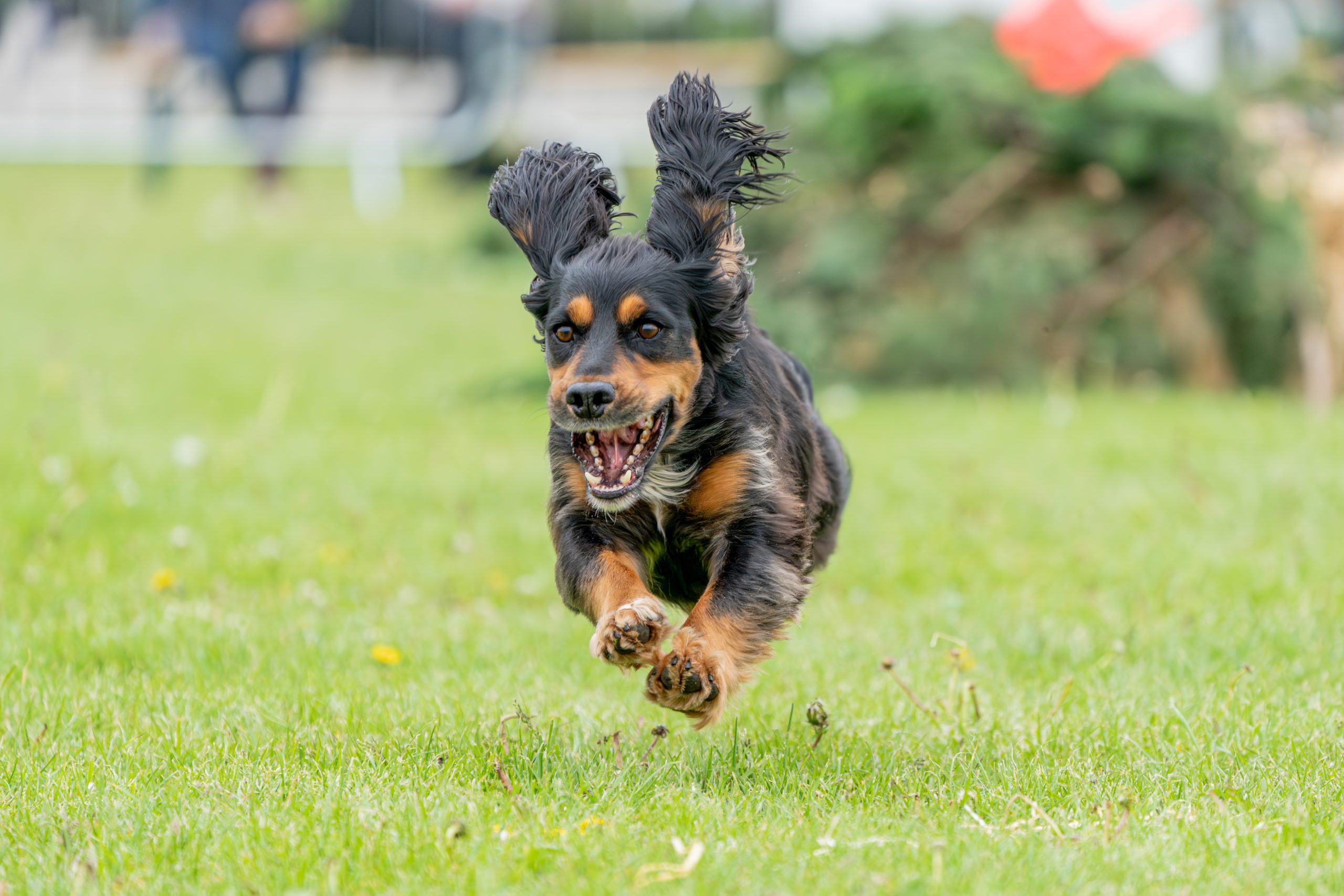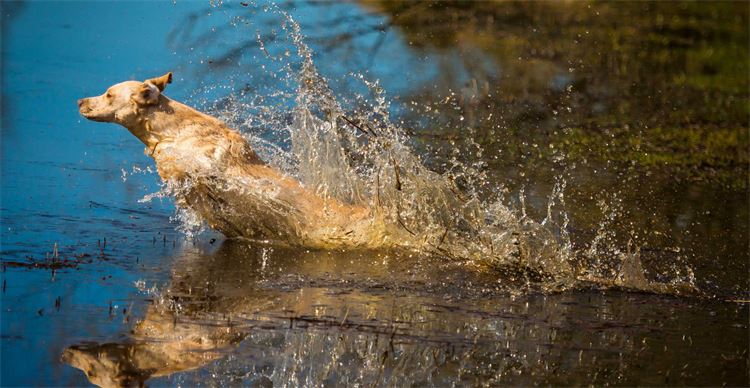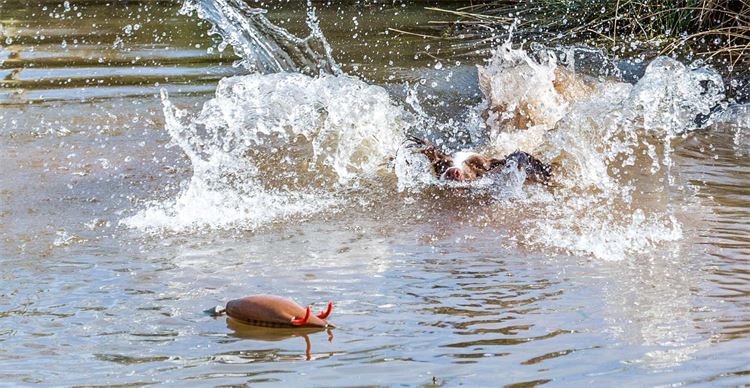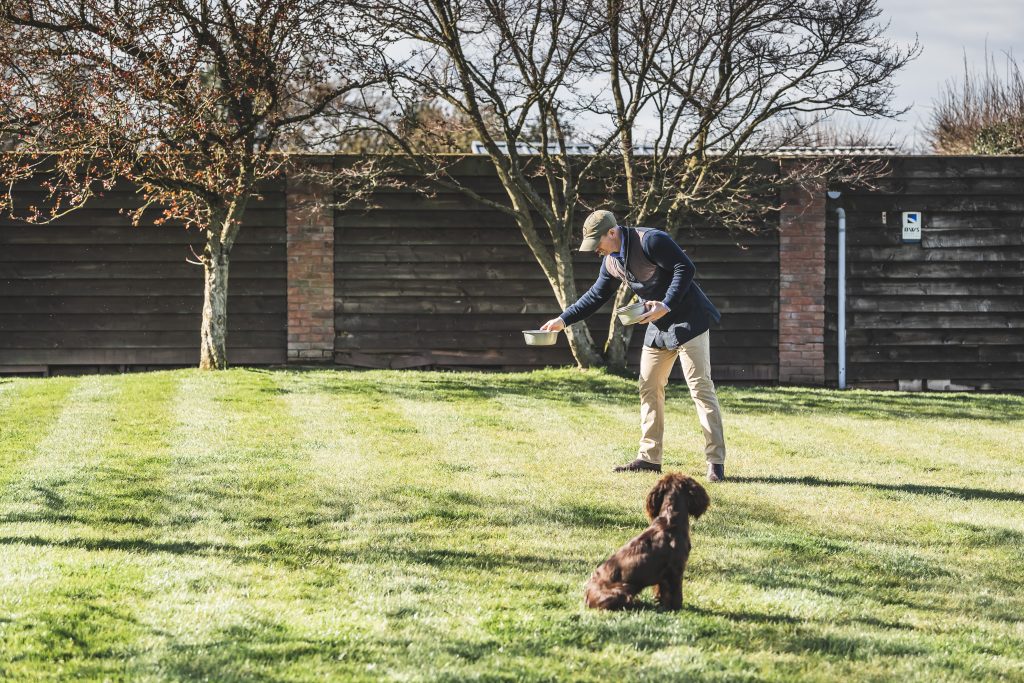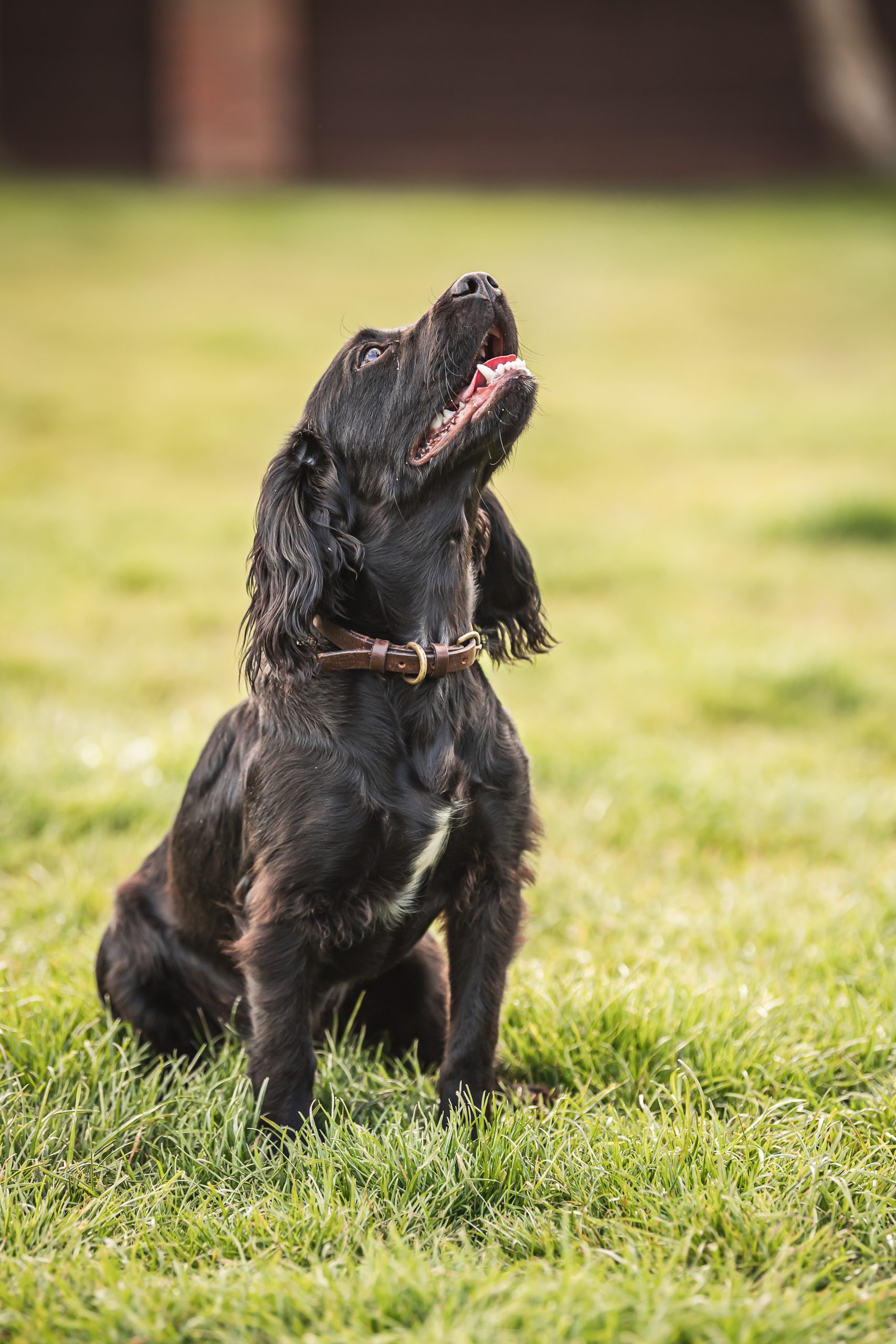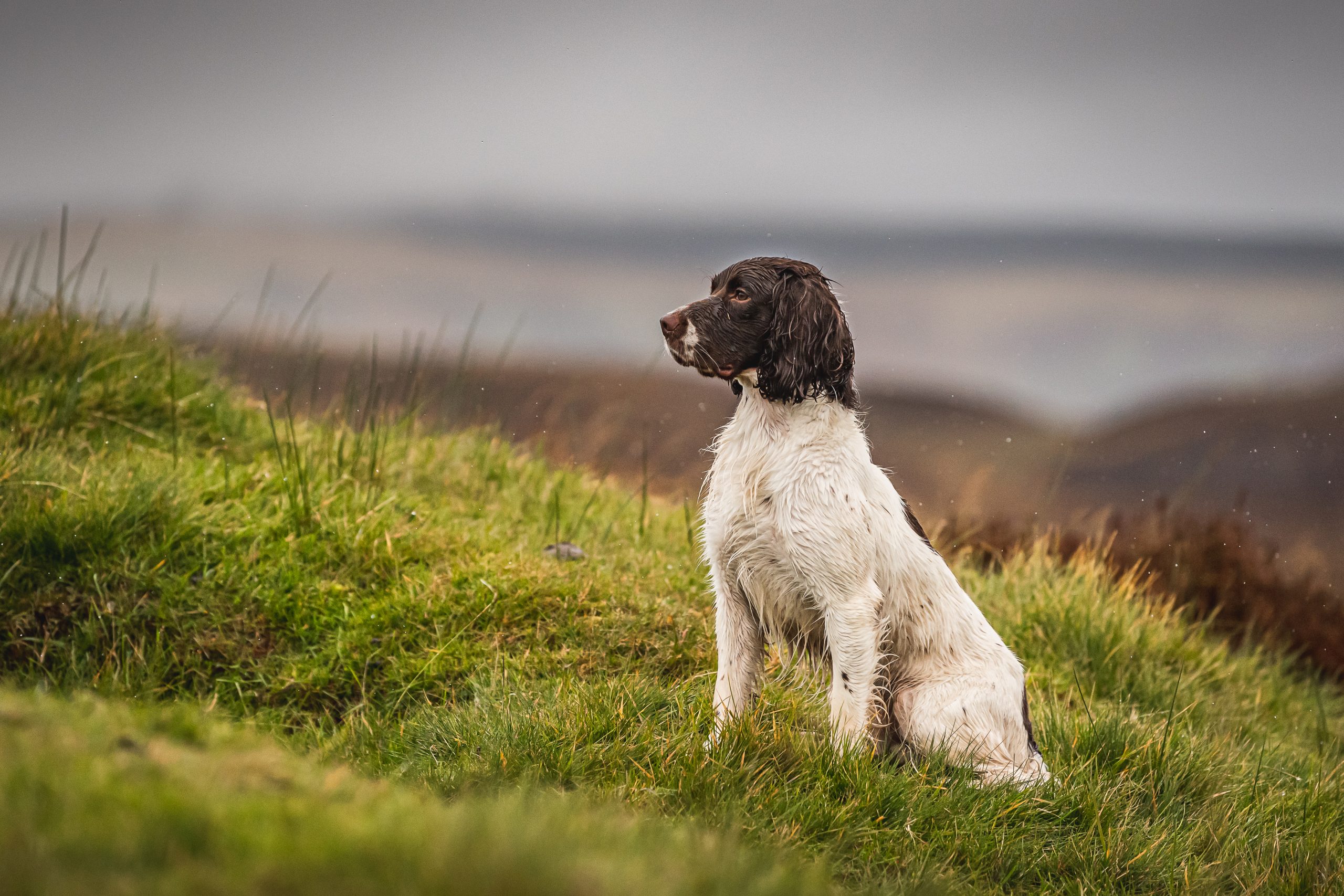Training
Introducing your dog to water
The summer months offer the perfect opportunity to introduce a dog to water, but it’s not something to be rushed into…
Would you like to appear on our site? We offer sponsored articles and advertising to put you in front of our readers. Find out more.
There’s no doubt that ‘water work’ is one of the more exciting aspects of gundog training – not to mention that swimming is great, low impact exercise for dogs and uses lots of muscles – but, perhaps not surprisingly, it’s an area where many do encounter obstacles and problems. And yet there are certain issues that crop up frequently.
Early days
Early in a dog’s life, it pays dividends if they are carefully exposed to a variety of situations and environments, water being one of them. The nature of this introduction is of great importance – you are effectively laying the foundations for your future water training sessions.
Initially, there should be no training element to sessions in and around water; this comes later once the dog is at ease with getting wet and has demonstrated steadiness in simple training exercises on dry land.
For younger dogs, start in shallow water with gently sloping banks. It makes sense to introduce a dog to water in warm weather, when it is a more pleasant experience.
Every dog is different – some will be in the water in no time at all; others will be more cautious. A dog should never be forced into water – relax, make the experience positive, and think about other ways you might encourage a dog that isn’t so sure, to get its feet wet.
One useful method is to use other dogs to instil confidence in a reluctant swimmer. If you don’t have more than one dog, arrange to go to some water with your friend(s) and a few of their well-behaved dogs. You will quite likely find that in a relaxed, casual, fun situation, where the dog can paddle, swim and drink, even the most cautious youngster will pluck up the courage to follow others into the water. It might be that you have to wade into the shallows yourself, too, or sit the dog up and let it watch another dog retrieve things from a pond or lake. All the time, this is reinforcing that water is a positive thing.
Keeping it simple
Once a dog is clearly confident, and has mastered the basics of sitting, staying, stopping and delivery to hand on land, then we can begin actual training sessions in water. Gradual progression in small increments is key.
It is important at this stage to ensure distractions are kept to a minimum. Try to find a quiet place to do water training, where there won’t be other dogs, people, or a lot of wildfowl present. As a basic rule, water training should be treated in the same way as training on land; we don’t want the dog to become overexcited at the prospect of a swimming session.
Start with simple retrieves that a dog can clearly see just a few yards away. Drop a ball or plastic dummy (that floats) into the water’s edge. Something that flicks out of the dog’s mouth quite easily can make it more desirable, further encouraging a dog to venture into the water. To smoothen the transition, I often do a few retrieves on land just before moving to the water’s edge.
Three successful retrieves per session are ample. Always end on a good note, and keep sessions short and positive, ensuring all parts of an exercise are perfect before increasing distances and moving, quite literally, into deeper water.
How to progress
Directional work and multiple dummies can be introduced once a dog is competent with travelling in a straight line to and from a single dummy on the water. A dog should be well versed with directional work on land before this is attempted in water, though – remember, it is more difficult for a dog to see and smell something on the water, so choose dummies/balls which stand out and sit quite high in the water. If the dog goes wrong, stay calm, recall him/her immediately and try again. And be prepared to rewind to simpler stages of training and then build your way back to a sticking point.
Back on dry land
A common mistake is to think of water work purely as training in the water; we need to be able to send our dogs over water for a retrieve, too.
During training, retrieves from water are therefore best limited. If a dog gets too used to picking objects from the water itself, you will find it difficult to encourage the dog to go over water to retrieve something. A common symptom is a dog that will swim round in circles trying to pick every stick or piece of weed off the surface.
I’d recommend enlisting the help of a friend when teaching a dog to go over water to retrieve something. Ask your friend to stand on the opposite bank of a small pond/stream, clap his/her hands to get the dog’s attention and drop a dummy in clear view. We want the dog to take a straight line from one bank to another, pick the dummy and come straight back. Again, start close to the water, and have the dummy dropper close to the water on the far side.
Increase distances gradually. If the distance is increased too soon, you will likely find that the dog will deviate from the most direct route or may even run around the edge of the pond.
Success is very important – the situation should be set up so it is hard for the dog to fail. Firstly, do not send the dog if you do not think it has marked the dropped dummy properly. If the dog jumps into the water and starts swimming around instead of taking a straight line, recall him/her immediately. And don’t be afraid to use an older dog to show an inexperienced dog what to do. The process should be simple: ‘send, water, pick, water, deliver, shake on command’.
As the dog’s trust in you builds, then you can try the exercise without the dummy dropper. Again, place the dummy close to the bank so it is easy to find and gradually increase the challenge as the dog progresses, adding ‘blind’ retrieves (where the dog has not seen you place a dummy) as you go.
The advanced stages
With further progression comes variables such as feathered game and running water.
Feathers will, of course, take on a new texture when wet which some dogs take a while to grow used to. Again, your dog should be used to retrieving feathered game on dry land before moving onto this in/over water. Clipped wings on dummies are a good starting point and offer an intermediate step for dogs that may find the heaviness of a wet, whole bird disconcerting. Start with a few retrieves on dry land, then at the water’s edge, then in the water, then over the water. Then switch to whole birds – a small, tight-feathered bird such as a partridge or teal is ideal.
Moving water should only be introduced when your dog is a very strong and confident swimmer. I have seen dogs panic when introduced too soon. A small stream is a good starting point. Be careful and think about what might be under the water’s surface, and stay well away from fast-moving water.
Related articles
Training
Patience is a virtue
It’s a skill that is often overlooked in training, but which is vital for all gundogs. Ben Randall explains how to capitalise on some everyday opportunities to practice it, now that spring is here.
By Time Well Spent
Training
The theory of puppy training
When you collect your puppy – and at every stage thereafter – you’ll need a safe and secure form of transportation. Here are four high-quality options to suit all requirements.
By Time Well Spent
Get the latest news delivered direct to your door
Subscribe to Gundog Journal
Unlock the full potential of your working dog with a subscription to Gundog Journal, the UK’s only dedicated magazine for gundog enthusiasts. Published bi-monthly, this authoritative resource delivers expert training advice, in-depth interviews with top trainers and veterinary guidance to help you nurture a stronger bond with your dog.
Whether you’re a professional handler, breeder, or simply passionate about gundogs, each issue offers a wealth of knowledge on breeds like labradors, spaniels and vizslas. Subscribers gain access to topical articles, real-life stories and exclusive offers from trusted brands.
With stunning photography and thought-provoking content, Gundog Journal is your essential guide to understanding, training and celebrating these remarkable working breeds.


Manage Consent
To provide the best experiences, we use technologies like cookies to store and/or access device information. Consenting to these technologies will allow us to process data such as browsing behavior or unique IDs on this site. Not consenting or withdrawing consent, may adversely affect certain features and functions.
Functional Always active
The technical storage or access is strictly necessary for the legitimate purpose of enabling the use of a specific service explicitly requested by the subscriber or user, or for the sole purpose of carrying out the transmission of a communication over an electronic communications network.
Preferences
The technical storage or access is necessary for the legitimate purpose of storing preferences that are not requested by the subscriber or user.
Statistics
The technical storage or access that is used exclusively for statistical purposes.
The technical storage or access that is used exclusively for anonymous statistical purposes. Without a subpoena, voluntary compliance on the part of your Internet Service Provider, or additional records from a third party, information stored or retrieved for this purpose alone cannot usually be used to identify you.
Marketing
The technical storage or access is required to create user profiles to send advertising, or to track the user on a website or across several websites for similar marketing purposes.


